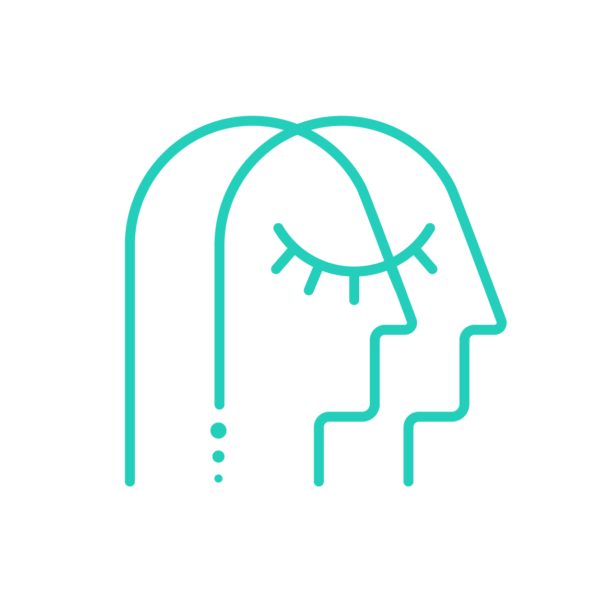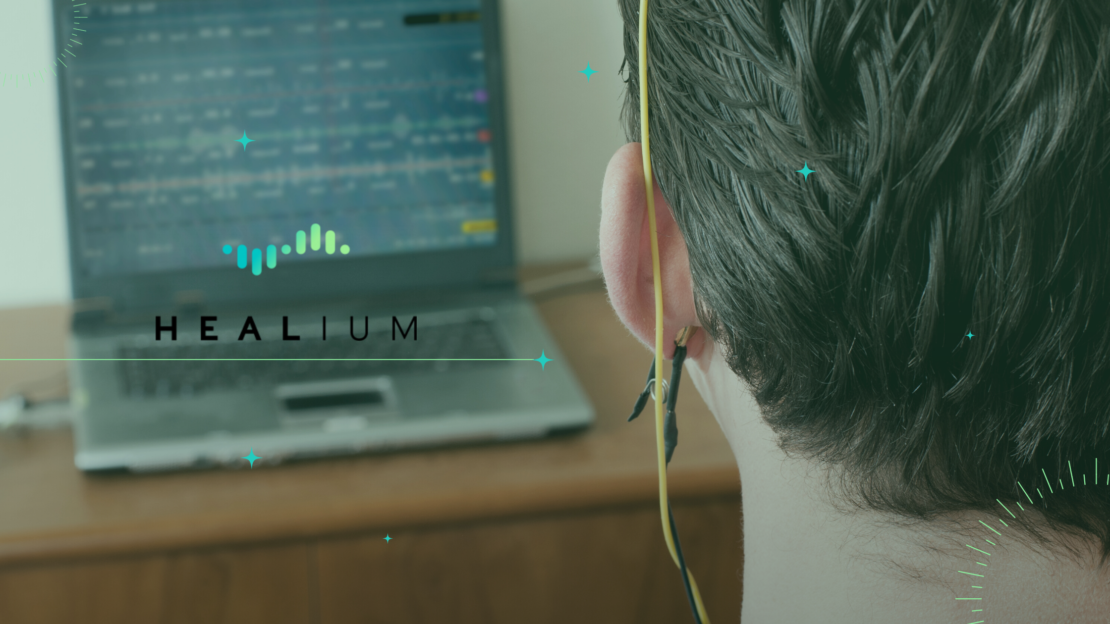




Learn more about the emerging science that suggests neurofeedback might be a valuable resource for those suffering from various mental disorders.

Neurofeedback, which is also known as EEG biofeedback, has grown in popularity due to the fact that it’s a non-invasive and medication-free approach that can benefit individuals with various mental conditions, such as ADHD, depression, PTSD, anxiety, and autism.
Please note: Neurofeedback therapy is not a cure for any mental disorders; however, it is a valuable tool for patients with conditions that may benefit from its use.
Neurofeedback is a specific type of biofeedback that measures brainwave activity.
Neurofeedback therapy involves measuring a patient’s brainwaves and giving that patient real-time feedback about how their brain functions in certain circumstances.
Neurofeedback therapy sessions follow a similar structure to practicing neurofeedback at home. Sessions are often paired with visual and audio-based stimuli to analyze and measure the brain’s response, and the experience is set up to reward and reinforce corrective brainwave behavior.
Quantitative EEG brain mapping takes the neurofeedback process a step further by gathering all the captured data and processing it through various algorithms through the use of modern applications such as wavelet analysis. The results give practitioners a “map” of the electrical activity of your brain and helps them determine its overall functioning.

Here are the types of brainwaves that neurofeedback therapy involves:
– Delta: Delta waves, which are also the slowest type, are active when a person is sleeping or when they’re in a non-aroused state.
– Theta: Theta waves are present when a person is fantasizing or daydreaming. This type of brain wave is also associated with intuition and creativity.
– Alpha: Alpha waves become active when our brain is in a relaxed, idle, or disengaged state. That’s why this type of wave is associated with relaxation.
– Beta: When a person is in a state of intellectual or mental activity, such as when they’re thinking, processing information, feeling anxious, or solving a problem, beta waves become present.
– Gamma: Gamma waves are the fastest measured brain waves and are essential for sensory and information-binding, which means they’re present when the brain is linking various pieces of information.
Clinical neurofeedback therapy is not a cure for any of the following conditions, but certain patients with these conditions may benefit from it:
People suffering from ADHD may spend more time in the theta state. Since theta waves are associated with deep relaxation, daydreaming, fantasizing, intuition, and creativity, this type of wave will dominate the brain’s activity when a person is unable to concentrate.
As compensation, people with ADHD may resort to hyperactive behavior to transition from the theta state to a beta wave state, which is present when processing information.
Ever since the ‘70s, patients with neurological disorders, specifically ADHD, have opted for neurofeedback to train their brains.
Proponents of neurofeedback therapy report that the treatment will have two benefits:
– Brain wave alterations endure well.
– Improvements in brain waves may lead to better focus, eliminate impulsivity, and reduce distractibility.
Research showed that people suffering from depression have imbalanced alpha waves oscillations –– the waves are more active in the left frontal cortex of the brain. The goal is to target these oscillations in the hope that they’ll be in sync with the alpha oscillations in the opposite frontal cortex. If this is achieved, depression symptoms may be reduced.
Furthermore, a 2019 study utilized neurofeedback to treat people with treatment-resistant depression (TRD). After three months, the study revealed that the participants’ response rate was around 58%. This shows that neurofeedback not only addresses the symptoms of TRD, but the therapy may be the key to recovery.
Lastly, another study displays positive results in using alpha/theta feedback training in addressing deep depression. Results from the study indicated training mainly involves promoting trauma-related healing, creativity, and relaxation.
A person who witnessed or experienced any traumatic event will force their brain into a flight-or-fight mode, which means they’re in a heightened state of arousal so they can be fully aware of your environment.
Having post-traumatic stress disorder (PTSD), then, implies that a person’s delta waves are active, which is the brain wave most associated with stress and anxiety.
Moreover, PTSD sets in when the state of arousal doesn’t fade even long after the traumatic event is witnessed or experienced. As a result, the person may:
– Mentally re-experience the traumatic event
– Display avoidance
– Have reactivity and arousal symptoms
– Experience mood and cognition problems
When it comes to handling PTSD, the goal of neurofeedback is to help patients transition from the state of arousal to a calmer one. This way, they’ll regain their sense of safety, allowing them to react appropriately to daily events.
There are already studies showing that neurofeedback therapy gives significant relief to PTSD symptoms. However, the benefits of neurofeedback are not yet conclusive and further research is needed in this area.
Abnormal alpha wave activity can be responsible for altering one’s attention and cognitive processing abilities.
When alpha waves are more active, a highly anxious individual may find it difficult to process information or focus on a specific thought or task.
Researchers believe that the key to lowering stress and anxiety lies in optimizing alpha wave levels. A study shows that neurofeedback training that targets alpha brain waves has reduced the participants’ anxiety levels.
Moreover, another study suggests that increasing both theta and alpha brain waves in the brain’s occipital lobes may reduce anxiety and generally improve the brain’s function in people with generalized anxiety disorder.
Data collection for autism is much easier if started in infancy when the brain is still developing. A year-old child who’s suspected of having autism has distinguishable delta and gamma brain waves. Autistic children also show a steep increase in delta brain wave while a slower increase in gamma brain waves over time than normal children.
Using EEG technology, neurofeedback brain mapping in a clinical setting can identify where the brain is having difficulty processing information. This means that neurofeedback may provide significant benefits in managing the symptoms of autistic spectrum disorder (ASD).
Here are a couple of symptoms that may be improved by neurofeedback therapy:
– Stimming
– Emotional outbursts
– Speech issues
– Ritualistic behavior
Neurofeedback can be a powerful tool to assist people who desperately need other treatment options, specifically when they’re dealing with mental disorders. As neurofeedback therapy targets particular parts of the brain and influences the brain’s electrical activity, it can be a beneficial option for people with ADHD, depression, PTSD, anxiety, or autism.
{“@context”:”https://schema.org”,”@type”:”FAQPage”,”mainEntity”:[{“@type”:”Question”,”name”:”What Is Neurofeedback Therapy?”,”acceptedAnswer”:{“@type”:”Answer”,”text”:”Neurofeedback therapy involves measuring a patient’s brainwaves and giving that patient real-time feedback about how their brain functions in certain circumstances. \nNeurofeedback therapy sessions follow a similar structure to practicing neurofeedback at home. Sessions are often paired with visual and audio-based stimuli to analyze and measure the brain’s response, and the experience is set up to reward and reinforce corrective brainwave behavior. \n”}},{“@type”:”Question”,”name”:”Can Neurofeedback Help ADHD?”,”acceptedAnswer”:{“@type”:”Answer”,”text”:”Yes, patients with ADHD have opted for neurofeedback to train their brains since as far back as the 70s. Proponents of neurofeedback therapy report that the treatment will have two benefits:\n● Brain wave alterations endure well.\n● Improvements in brain waves may lead to better focus, eliminate impulsivity, and reduce distractibility.”}},{“@type”:”Question”,”name”:”Can Neurofeedback Help PTSD?”,”acceptedAnswer”:{“@type”:”Answer”,”text”:”Yes. Having post-traumatic stress disorder (PTSD), implies that a person’s delta waves are active, which is the brain wave most associated with stress and anxiety. Neurofeedback is especially helpful in returning to calmer states of mind. “}},{“@type”:”Question”,”name”:”Can Neurofeedback Help Depression?”,”acceptedAnswer”:{“@type”:”Answer”,”text”:”Yes it can. Research showed that people suffering from depression have imbalanced alpha waves oscillations –– the waves are more active in the left frontal cortex of the brain. The goal is to target these oscillations in the hope that they’ll be in sync with the alpha oscillations in the opposite frontal cortex. If this is achieved, depression symptoms may be reduced.”}},{“@type”:”Question”,”name”:”Can Neurofeedback Help Autism?”,”acceptedAnswer”:{“@type”:”Answer”,”text”:”Using EEG technology, neurofeedback can identify where the brain is having difficulty processing information. This means that neurofeedback may provide significant benefits in handling the symptoms of autistic spectrum disorder (ASD). “}},{“@type”:”Question”,”name”:”Can Neurofeedback Help Anxiety?”,”acceptedAnswer”:{“@type”:”Answer”,”text”:”Yes. When alpha waves are more active, a highly anxious individual may find it difficult to process information or focus on a specific thought or task. \nResearchers believe that the key to lowering stress and anxiety lies in optimizing alpha wave levels. A study shows that neurofeedback training that targets alpha brain waves has reduced the participants’ anxiety levels. “}}]}
Sarah Hill, a former interactive TV news journalist at NBC, ABC, and CBS affiliates in Missouri, gained recognition for pioneering interactive news broadcasting using Google Hangouts. She is now the CEO of Healium, the world’s first biometrically powered VR/AR channel, helping those with stress, anxiety, insomnia, and other struggles through biofeedback storytelling. With patents, clinical validation, and over seven million views, she has reshaped the landscape of immersive media.